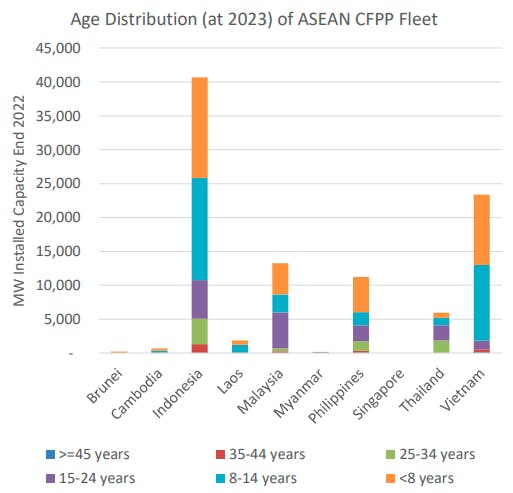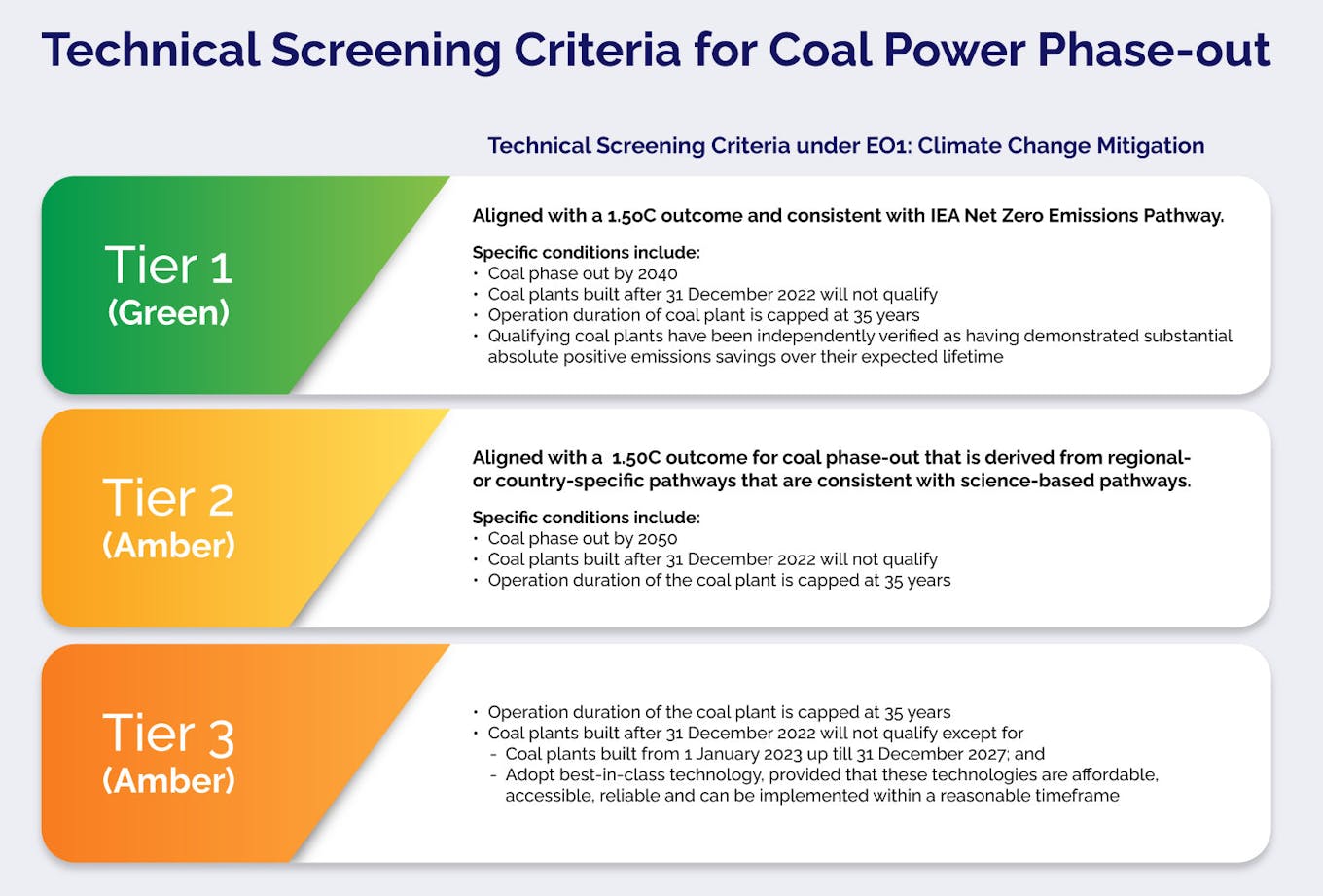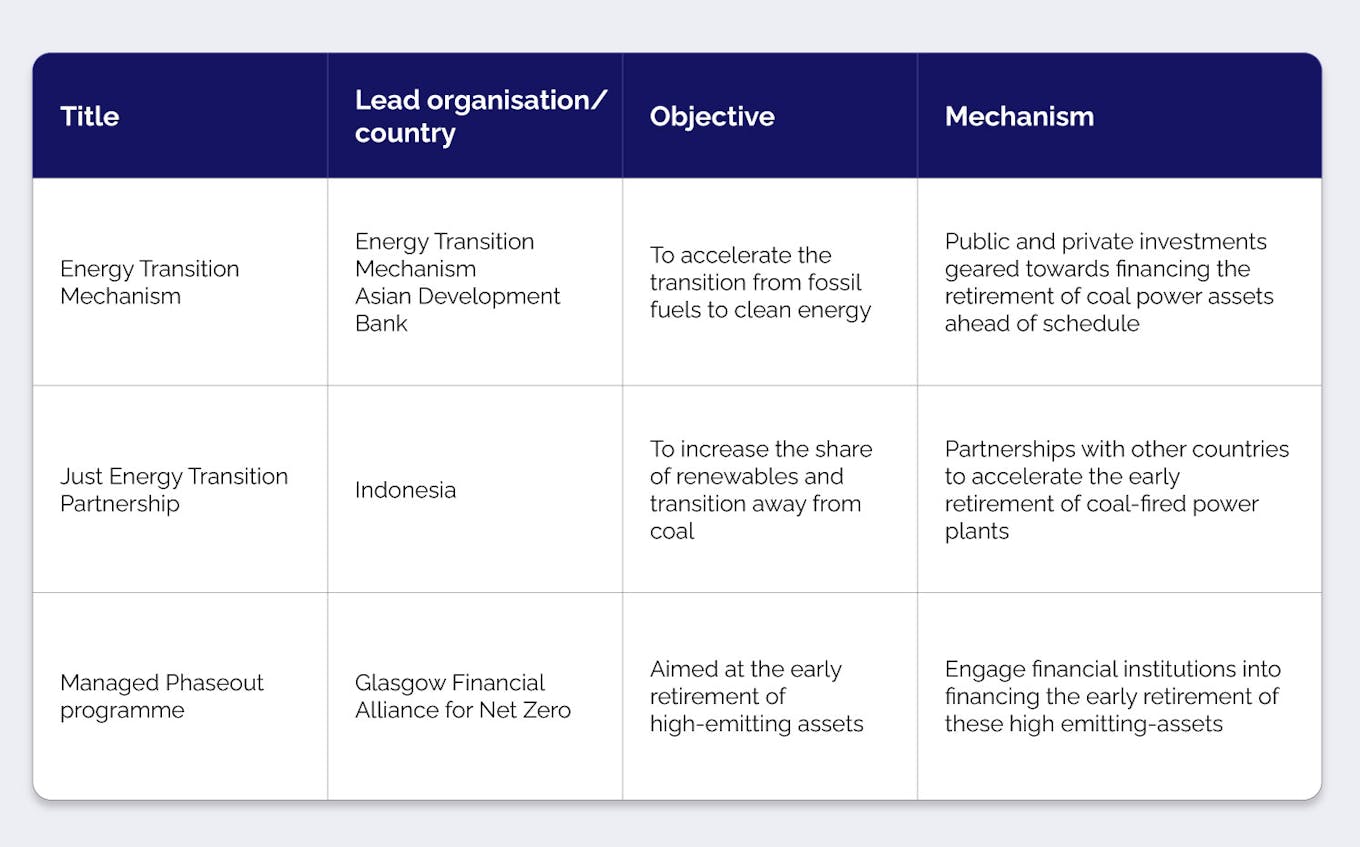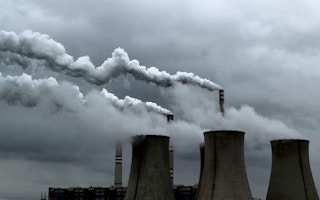Sustainable finance taxonomies have gained increasing traction among policymakers and financial institutions as they seek to classify what activities should be prioritised in order to meet net-zero emissions targets. In Southeast Asia, where fossil fuels account for more than 70 per cent of electricity generation, there is a pressing need to decarbonise the energy sector in particular. To this end, the Association of Southeast Asian Nations (Asean) included criteria to support the phasing out of coal in the latest version of its taxonomy for sustainable finance, as it recognises the benefits of reducing emissions from coal power generation in a managed phase out.
Version 2 of the Asean Taxonomy for Sustainable Finance (ATV2), published in March 2023, was produced based on stakeholder consultations following the release of its first version in November 2021. The second version sought to align further with the established European Union taxonomy for sustainable activities while accounting for the differences in financial sector maturity and diverse economic and social circumstances across Asean member states.
Coal’s presence in Asean
Coal power generation accounts a significant portion of the region’s carbon emissions, as coal produces almost twice the amount of emissions produced by gas. Due to growing energy demand in Asean, however, roughly 20-gigawatts of new coal-fired generating capacity is currently under construction and slated for construction over the next few years.

Source: Asean Taxonomy for Sustainable Finance: Version 2
Coal phase-out in the Asean Taxonomy Version 2
A critical update to the ATV2 is its inclusion of an assessment framework for phasing out coal, which according to the Asean Taxonomy Board (ATB) is a “global first”.
In the ATV2, the coal phase-out is defined as “an activity whereby processes involving combustion of coal, such as coal powered generation of electricity, are shut down over time in line with aims to reduce greenhouse gas emissions.” Criteria such as emissions intensity, absolute emissions reduction, or the reduction in period of operations have been considered in developing the associated Technical Screening Criteria.

Source: Asean Taxonomy for Sustainable Finance: Version 2
Green to amber
The Technical Screening Citeria in the updated taxonomy “aims to promote inclusivity without compromising credibility and interoperability,” according to the taxonomy board. Using the criteria, activities related to the coal phase-out are categorised into three tiers, ranging from green to amber, which are ranked according to how quickly coal-fired plants are planned for retirement.
The ATB explained that it chose to use calendar dates and the ages of coal-fired plants as the basis for its timeline, as calendar dates provide a hard deadline for coal-fired operations to stop and age may be seen as a proxy for emission factor. Older and less advanced plants are typically heavier emitters, although the emissions factor also depends on the design of the plant and fuel used. As of 2023, 38 per cent of existing coal-fired power plants across Asean will be less than 8 years old, and close to 90 per cent of them will be less than 35 years old. The plants typically have a useful life of about 40 years, although some operate for much longer with refurbishment.

Plus Standard Technical Screening Criteria for coal-powered plants. Adapted from ASEAN Taxonomy Version 2. Source: Asean Taxonomy for Sustainable Finance: Version 2
“Early phase-out based on the age of coal-fired power plants is a simpler way of assessment. On the other hand, using emissions-based calculations is complex and it is difficult to balance robustness of the calculation formula and ease of usability of the taxonomy,” the ATB said.
Enhancing interoperability
The Asean taxonomy is intended to be interoperable with the national taxonomies of its member states, including Malaysia. To this end, the ATB conducted a syndication exercise to review the Asean taxonomy’s Technical Screening Criteria used to assess activities with those developed or in development by Asean Member States, to ensure alignment between them.
Two taxonomies have currently been published in Malaysia, namely Bank Negara Malaysia’s Climate Change and Principle-based Taxonomy, published in 2021, as well as the Securities Commission Malaysia’s Sustainable and Responsible Investment Taxonomy, published in 2022. Both organisations also have representatives on the ATB.
The ATV2 also acknowledges that several plans for coal phase-outs are already in place across various Asean countries, which are expected to help the region realise its net-zero emissions target as early as 2050. The initiatives listed in the taxonomy are tabled in the figure below.

Existing financing mechanisms in Asean for managed coal phase-outs. Source: Asean Taxonomy for Sustainable Finance: Version 2
Overall, the updated Asean taxonomy gives users the flexibility to decide on how to implement the taxonomy in ways that best fit their context or preference. For example, there are two assessment approaches, which are the Foundation Framework which is a simpler principles-based assessment that can be used despite challenges in data availability, and the more robust Plus Standard approach. The Asean taxonomy allows member states to set policies on the applicable assessment approach and methodologies for specific activities. As a ‘transition taxonomy’, it also recognises the ongoing financing needs required to meet the region’s growing energy demand, while also working towards longer-term decarbonisation.
“We recognise that while the inclusion of coal phase-outs in the Asean taxonomy is novel, when approached correctly, it provides a powerful tool for transition and looks forward to further dialogue with the international community and other stakeholders for effective implementation,” the ATB said.
This article was first published on Bursa Sustain, Bursa Malaysia’s one-stop knowledge hub that promotes and supports development in sustainability, corporate governance and responsible investment among public-listed companies.










